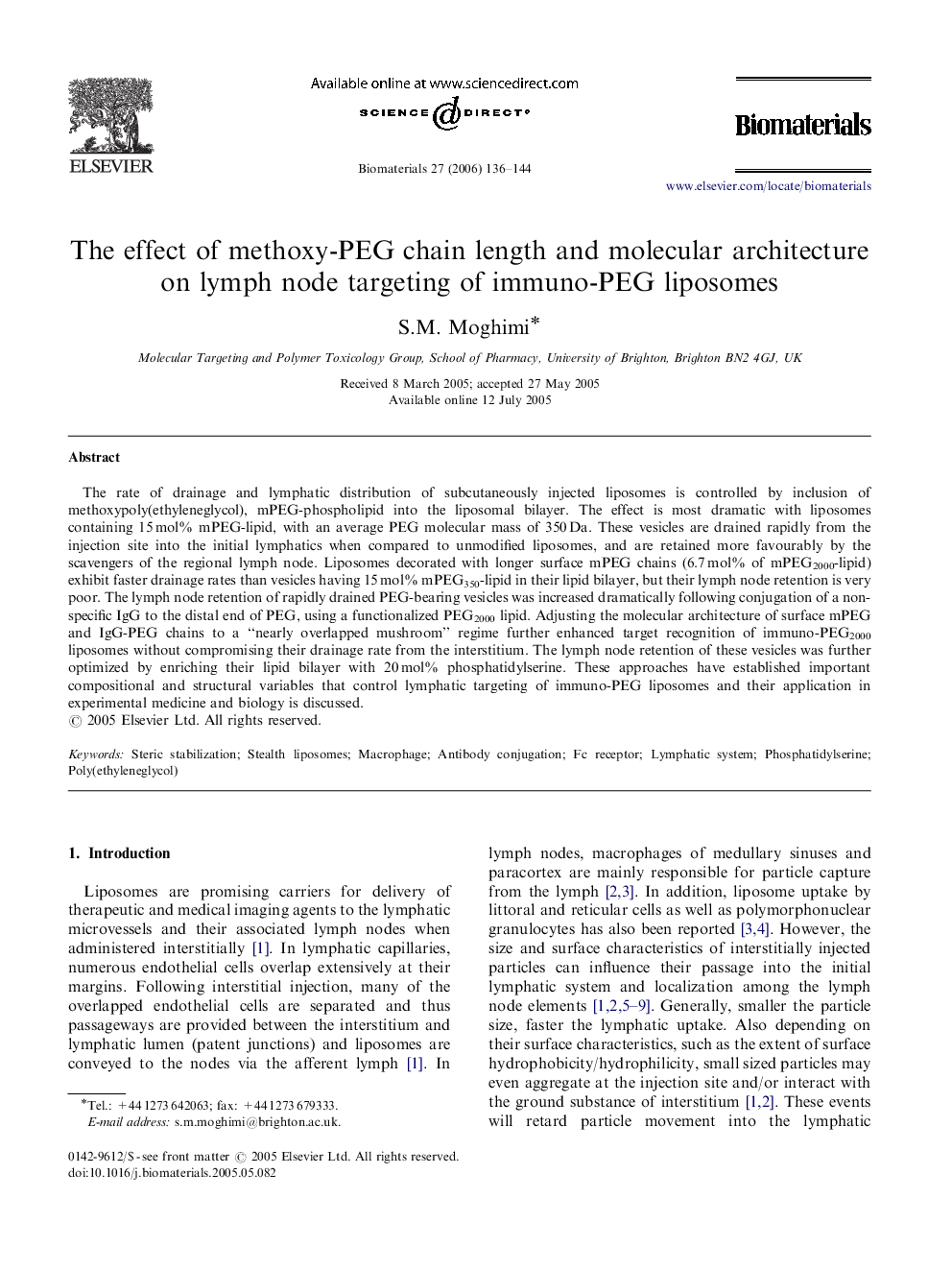| کد مقاله | کد نشریه | سال انتشار | مقاله انگلیسی | نسخه تمام متن |
|---|---|---|---|---|
| 11864 | 762 | 2006 | 9 صفحه PDF | دانلود رایگان |

The rate of drainage and lymphatic distribution of subcutaneously injected liposomes is controlled by inclusion of methoxypoly(ethyleneglycol), mPEG-phospholipid into the liposomal bilayer. The effect is most dramatic with liposomes containing 15 mol% mPEG-lipid, with an average PEG molecular mass of 350 Da. These vesicles are drained rapidly from the injection site into the initial lymphatics when compared to unmodified liposomes, and are retained more favourably by the scavengers of the regional lymph node. Liposomes decorated with longer surface mPEG chains (6.7 mol% of mPEG2000-lipid) exhibit faster drainage rates than vesicles having 15 mol% mPEG350-lipid in their lipid bilayer, but their lymph node retention is very poor. The lymph node retention of rapidly drained PEG-bearing vesicles was increased dramatically following conjugation of a non-specific IgG to the distal end of PEG, using a functionalized PEG2000 lipid. Adjusting the molecular architecture of surface mPEG and IgG-PEG chains to a “nearly overlapped mushroom” regime further enhanced target recognition of immuno-PEG2000 liposomes without compromising their drainage rate from the interstitium. The lymph node retention of these vesicles was further optimized by enriching their lipid bilayer with 20 mol% phosphatidylserine. These approaches have established important compositional and structural variables that control lymphatic targeting of immuno-PEG liposomes and their application in experimental medicine and biology is discussed.
Journal: Biomaterials - Volume 27, Issue 1, January 2006, Pages 136–144